Birds and Community in Aguas Vivas
Agua Viva in Venezuela is a vibrant community between the Terepaima National Park and an agricultural zone. The Casa de la Cultura San Antonio ( San Antonio House of Culture, in English) calls Agua Viva home. Their team promotes a love for birds within the community and advocate for wildlife conservation. The group also seeks to improve the quality of life in the community through outreach and campaigns to raise awareness of these topics. Due to their excellent work in the past and their plans for the future, the organization won a mini-grant from the Cornell Lab of Ornithology for groups and organizations in Latin America and the Caribbean. The mini-grant supported several interactive and educational events for the community, especially the youth and children. The workshops and activities facilitated an exchange of knowledge about local birds between organizers and attendees that culminated in the exciting Bird and Parrot Festival.
All participants had to feel comfortable discussing birds, so the program began with a conversation regarding technical terms and general information about birds. This chat helped get everyone up to speed. The talk was interactive and allowed everyone to share their experiences with birds along with their understanding of them. An artistic activity followed where all the participants had the chance to paint and color birds that they liked. Art is a great way to familiarize oneself with the fascinating details unique to each bird, and it also got the participants excited to go out and observe local wild birds.

Next, it was time to go bird-watching, and all the participants were excited! A quick training session before the activity ensured that all the participants knew how to use binoculars and identify birds by silhouette or song. As a fun little test, everyone got a copy of a bird silhouette, which they had to identify with the help of the teaching material provided by the AVEZONA organization. Once participants developed their bird-watching skills, they went on their first bird-watching walk. Throughout the walk, they identified the most common birds using what they learned about their songs, silhouettes, and colors. The day ended with a yummy snack and stickers for all the participants to celebrate their efforts. A few of the children shared their comments about their experience:
Fabiana, 6 years old: “They are cousins of chicks.”
Luis, 11 years old: “They are animals with feathers that fly.”
María Fabiola, 8 years old: “They are animals that have a head and a beak, and they sing beautifully.”
The arts are a fantastic tool, particularly for children, which helps uniquely cement concepts. A workshop was held to make feeders and nests for birds. The mayor of the Palavecino municipality and some local artisans who work with recycling helped with these projects. The same activity was also carried out in Cabudare with students from the Liceo Bolivariano Creación Palavecino, Liceo Bolivariano Jacinto Lara, and Colegio Cristobal Palavecini. Local artists guided activities in which the students created nests using recycled materials, allowing participants to learn about these structures and their purpose while helping clean up the environment. Afterward, a bird-watching activity helped connect the concept of observing birds and the importance of caring for their habitats.
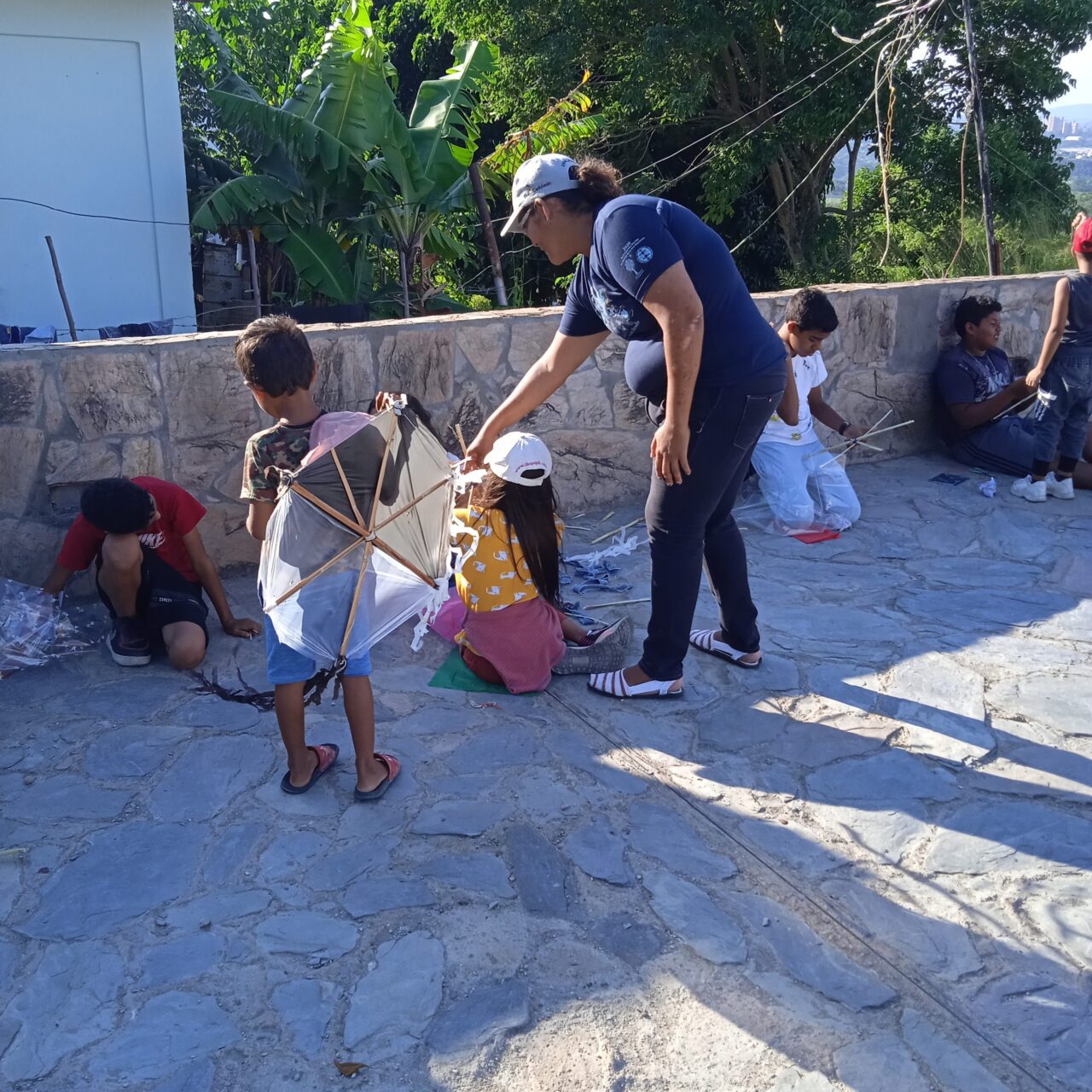
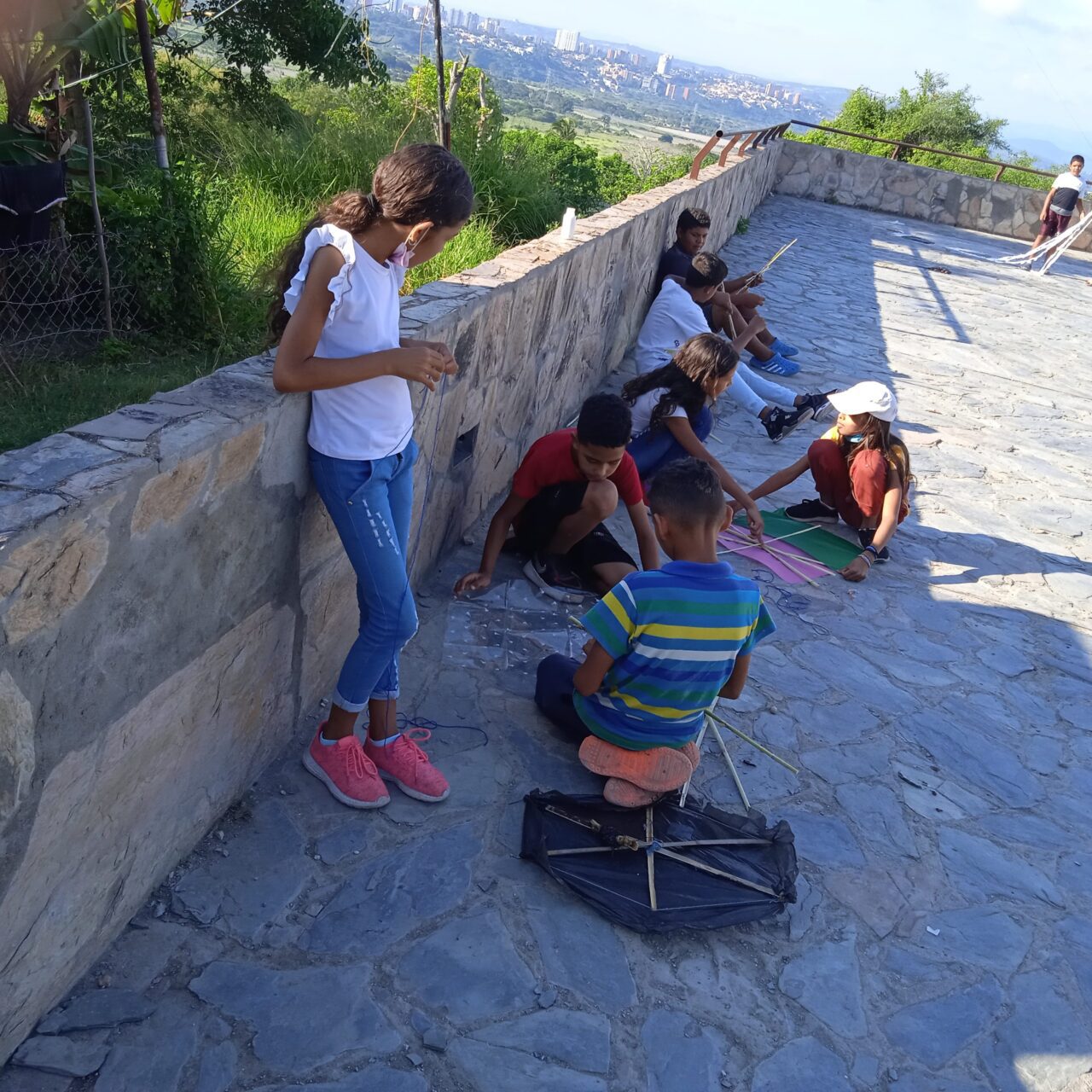
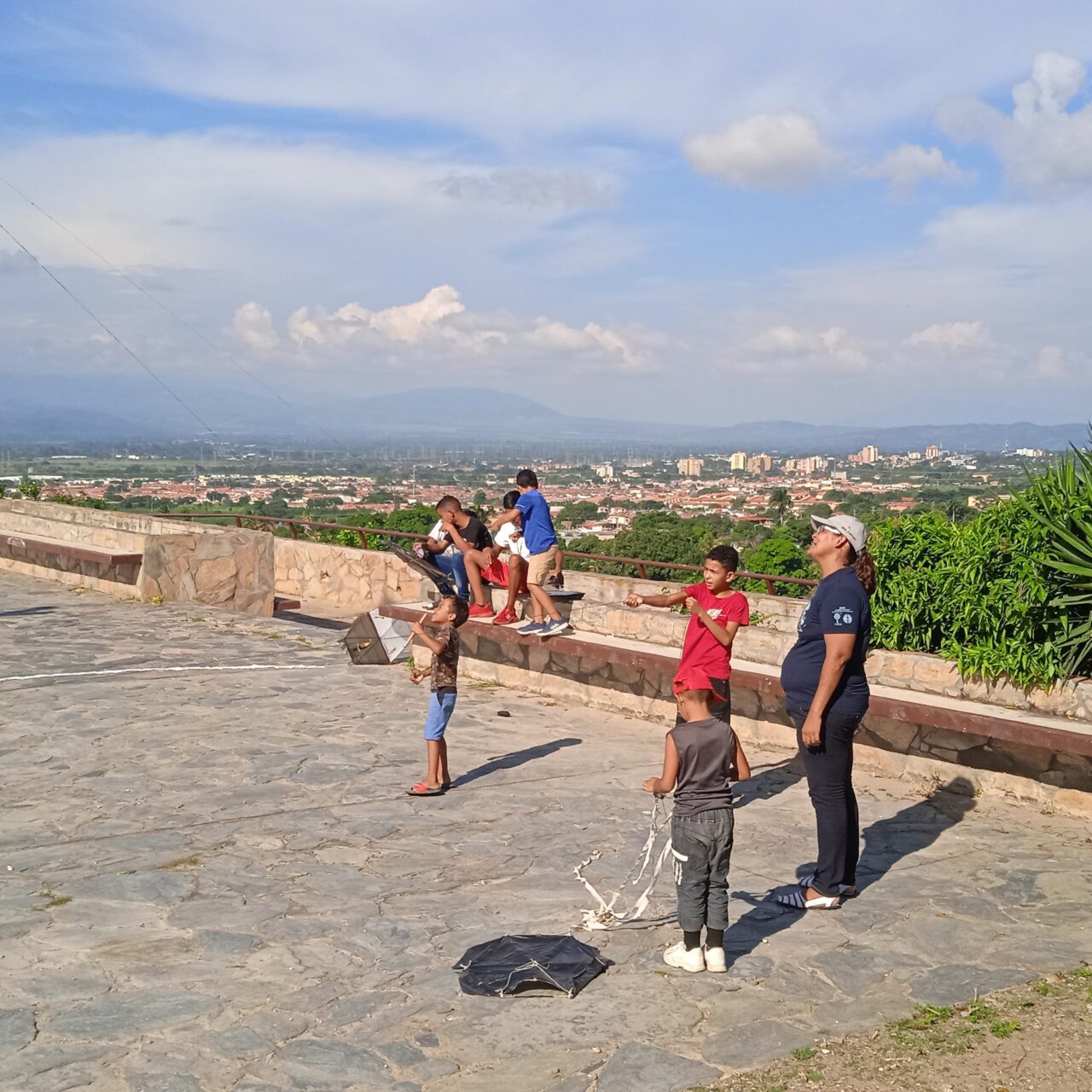
Another excellent way to learn about new topics is through theater and puppetry. The freedom of artistic expression allows people to spread messages and raise awareness. A theatre workshop was organized to share information about bird migrations while everyone enjoyed the creative show. In the play, two birds take flight and pass through valleys and mountains, avoiding dangers and becoming best friends in the process. At the end of their journey, the two friends arrive in the jungle and valleys of Venezuela, where they discover the vast diversity of birds in the area and realize that they are surrounded by new friends who make them feel very happy! The children were very excited during the play and after learning about the importance of avian migration. They left with their hearts full of love for Venezuelan birds and the birds living worldwide. Some kids had comments after the play:
Nahomi, 10 years old: “When I grow up, I will be a bird doctor, so when they travel from the
United States and they have a fever or get sick, I give them medicine.”
Matías, 11 years old: “The good thing about these little birds’ journey is that they get to explore many different places that we don’t.”
Murals are another beautiful form of artistic expression that is collaborative and educational and leaves a lasting mark on the community. The Casa de la Cultura San Antonio promoted community engagement with a project to paint two murals collectively. The first mural was a pair of multicolored open wings in a local park so visitors and locals alike could take photos in front of the wings and imagine that they were birds. The office of Palavecino’s mayor graciously contributed funds to complete the mural, and the community appreciated their support. The second stage was the creation of a mural in the living room of the Casa de la Cultura San Antonio. The mural was a spectacular explosion of colors! It had a mandala of multicolored birds accompanied by a local hummingbird. The mural was a team effort between children and adults. Both groups came together to design the artwork and then brought it to life on the walls. In the end, everyone was pleased and proud of the work they had done together. Creating the mural took five afternoons and left beautiful memories of laughing together, learning, and community collaboration.
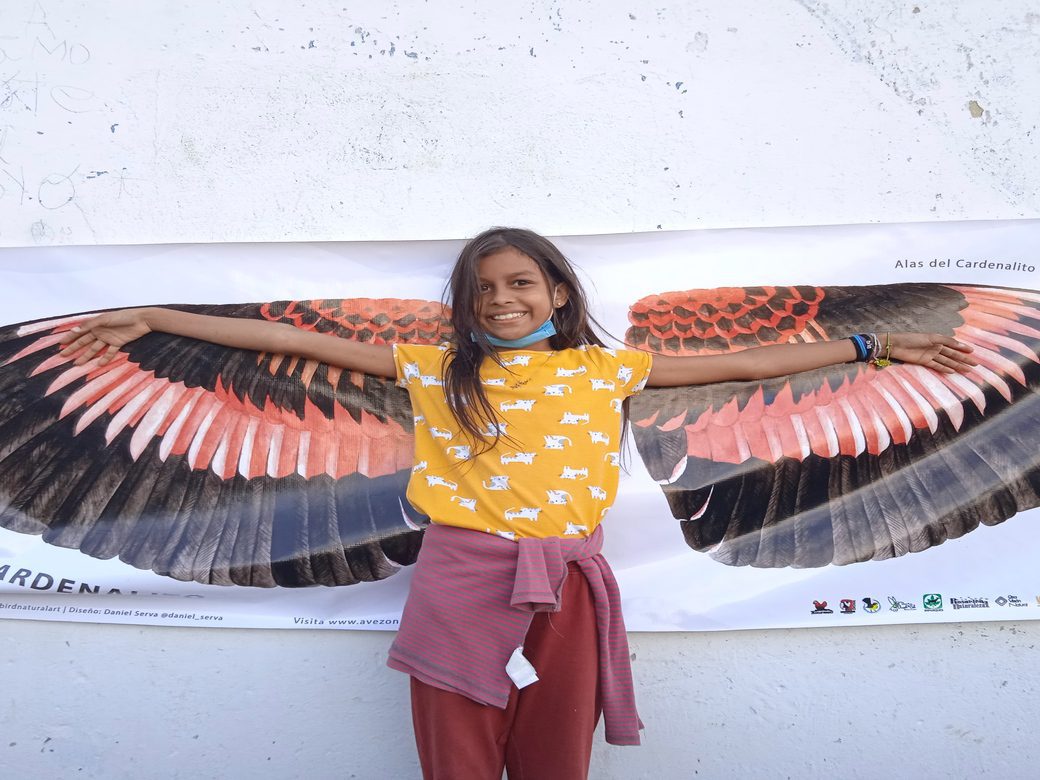
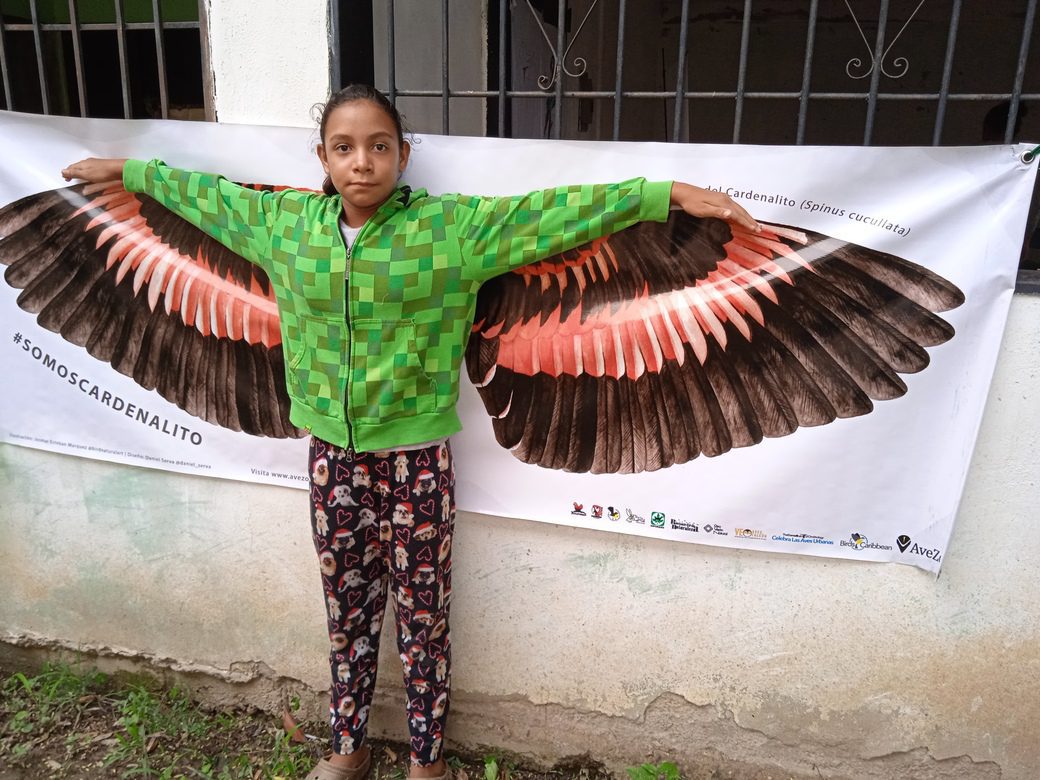
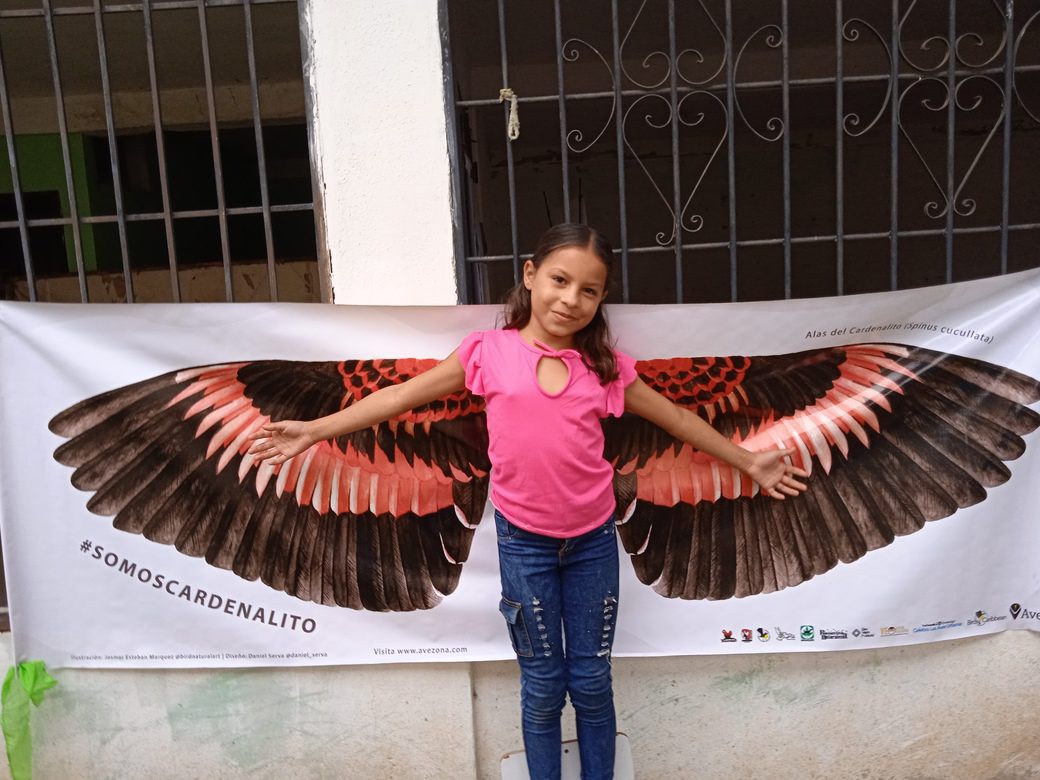
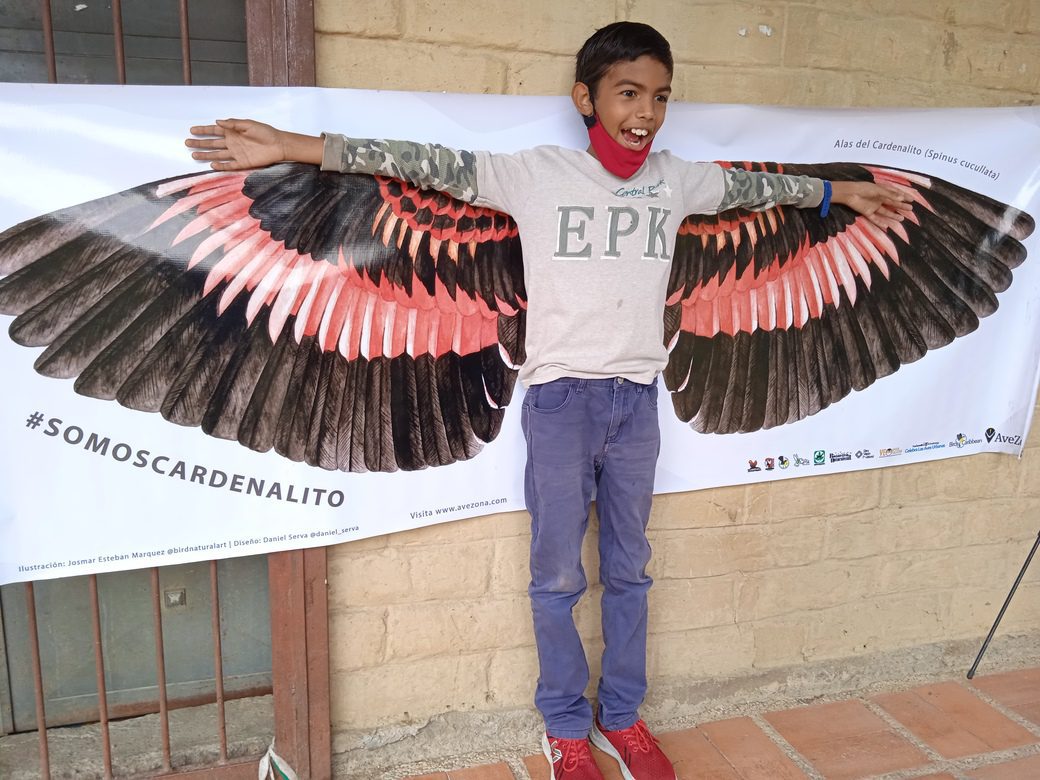
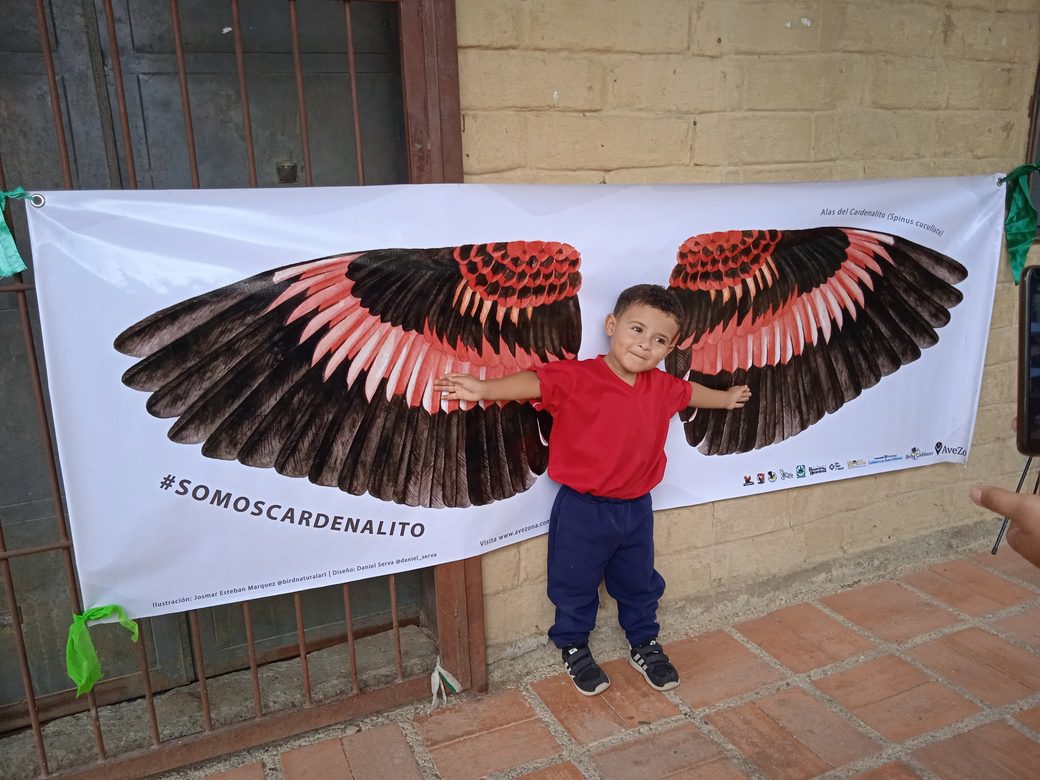
Afterward, the youth gathered to create stories about birds using their imagination and the information they had learned during the activities. They became familiar with story-making and left the activity with the necessary tools to create intricate and beautiful stories. The different stories inspired by local birds were exhibited to the community in a beautiful event open to the public.
The artistic activities inspired the participants to go out and observe birds once more. A walk was organized in the foothills of the Terepaima National Park. The walk began with a historical tour of the area by the chronicler José Luis Sotillo, who shared the importance of the surrounding regions in forming the parish. Following the tour, a group nature meditation allowed the participants to relax their minds in preparation for observing birds. Awakening the senses to the sounds and smells of nature dramatically improves one’s connection with one’s surroundings, and it allows the participants to be more aware of the subtle sounds of the birds. Once everyone was relaxed and ready, an exciting birdwatch took place. All the participants brought together the practical and artistic experiences and knowledge they had acquired throughout the activities.
Unbelievably, there were still more activities in store! Two more days full of bird-watching fun took place, and participants took the chance to explore areas of their community with fresh eyes as they looked for local birds. Participants were not just having fun but also working hard to generate lists of the birds they had seen to share later on the Cornell University Lab of Ornithology participatory science platforms.
The Bird and Parrot Festival was the capstone event. It was a beautiful event full of e activities that allowed the entire community to come together and interact with nature through the lens of the parrots. The festival was full of traditional regional music, and people sang and smiled everywhere you looked. All types of fun games were played, with people having the chance to win badges, bracelets, bookmarks, and so much more!
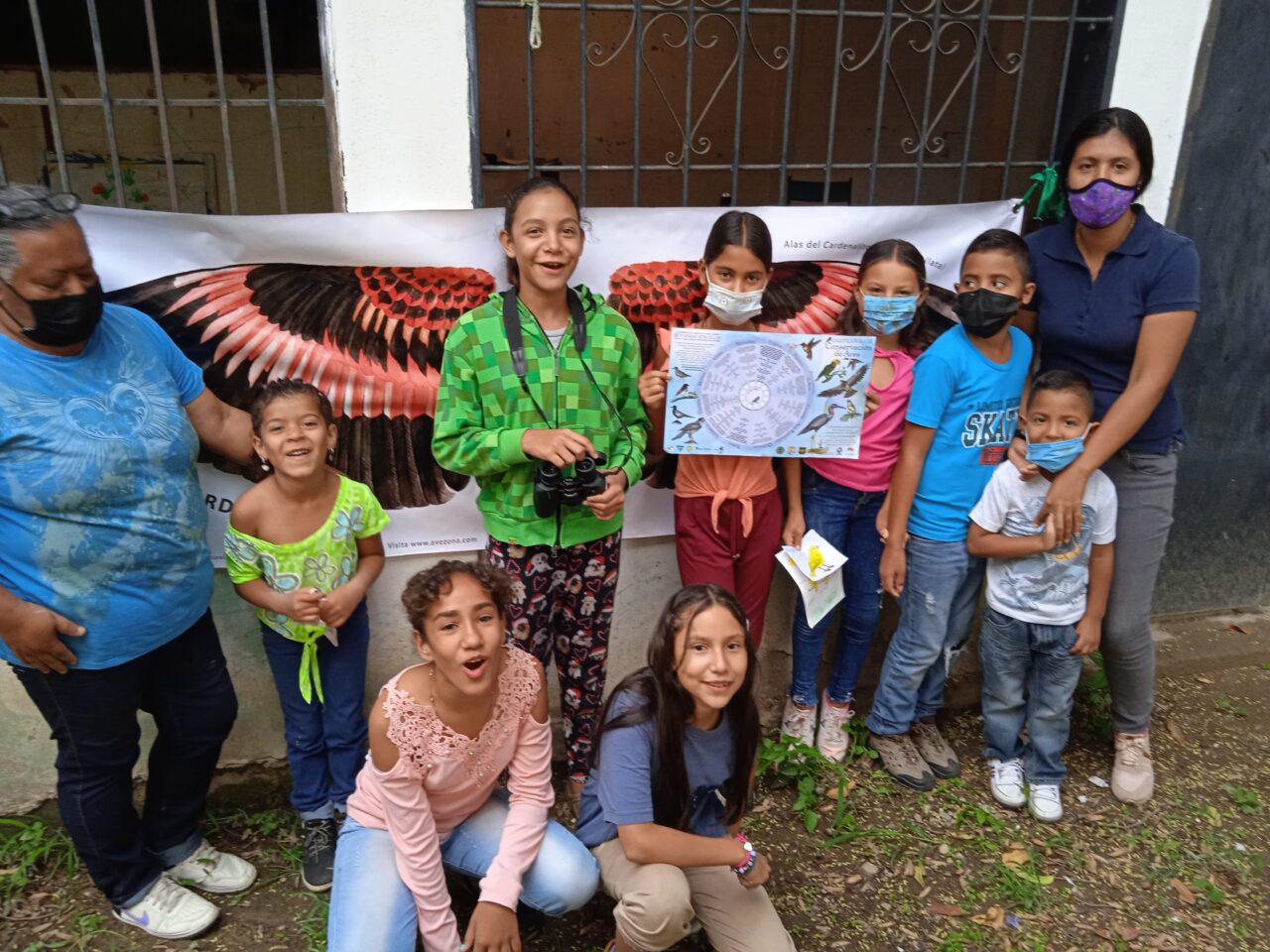
A few selected comments from the end of the festival:
Liscary Arrieche, 10 years old: “I really like parrots and I liked the story of where the come from.”
Isaac Mendez, 11 years old: “I loved all the activities I was a part of in this project, I even collect the stickers I have been given. I want to have all the birds and today I won a cute parrot.”
Elena Torrealba, 45 years old: “I think it’s a beautiful activity, it has been years since I’ve seen so many parrots. I feel like a girl again.”
José Rivero, 45 years old: “The activities were very nice, I hope to join you again.”
Thanks is extended to the support provided by the Cornell University Lab of Ornithology that allowed the Casa de la Cultura San Antonio to continue carrying out their excellent work. The teaching materials and binoculars provided by AVEZONA were a great asset and their distribution was greatly appreciated. The educational institutions: Liceo Bolivariano Creación Palavecino, Liceo Bolivariano Jacinto Lara and Colegio Cristobal Palavecini as well as the mayor of Palavecino are also thanked for their participation.
